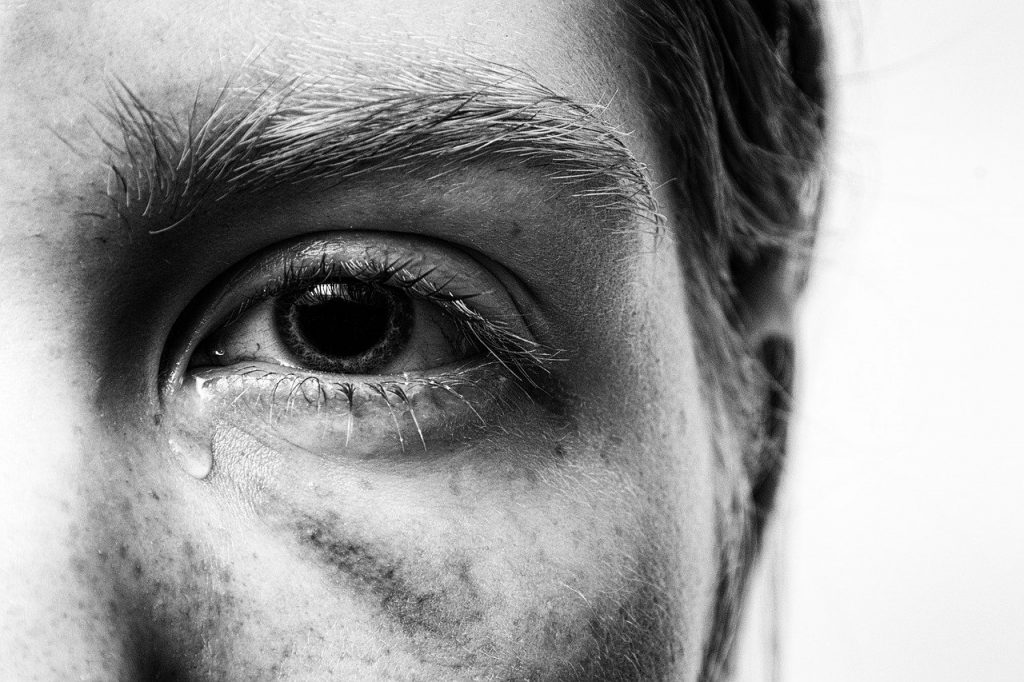
It’s never simple to describe trauma because trauma takes many shapes. For servicemen and women, witnessing combat and war atrocities could cause severe PTSD symptoms. For survivors of natural disasters or abuse, PTSD could develop immediately after the event or develop over time.
When talking about trauma, it’s helpful to know how it’s defined and what exactly happens in the brain. For more information on what events cause trauma and possible treatments, visit BetterHelp.
Table of Contents
Defining Trauma
The DSM-5, Diagnostic and Statistical Manual of Mental Disorders, defines trauma as “actual or threatened death, serious injury, or sexual violence.” However, trauma can arise from events that don’t fit this exact description.
There are countless examples of stressful situations that result in trauma. Abusive relationships, surviving a natural disaster, losing a loved one, witnessing death or violence, even living through a deadly illness can be considered traumatic events, even though they don’t fit the official scope of trauma.
Two people could experience the same event, and both could develop trauma differently, if at all. Studies show that an individual with a genetic predisposition to psychological disorders such as schizophrenia may also develop PTSD after living through a traumatic event.
Biological factors are also another factor to consider. Suppose a person is exposed to a severe risk of death daily. They may initially develop resilience to these symptoms but may be more prone to PTSD if confronted with any associated stimuli.
Symptoms of PTSD vary among everyone, but they mostly fall under one of four categories.
Reliving the Event
These symptoms range from flashbacks, nightmares, hallucinations, or intrusive memories. An example of this can be a typhoon survivor that relives the event whenever they’re close to a body of water.
Avoiding Associations
Survivors who experience trauma may avoid anything associated with the traumatic event. Survivors of sexual abuse may avoid crowded places or social settings because of the trauma they’ve experienced. Someone who lived through a car accident may avoid driving or getting into a vehicle.
Physiological Arousal
These are the physical manifestations of trauma and can develop into chest tightness, excessive sweating, anxiety, headaches, irritability, or a lack of concentration.
Negative Thoughts
These are difficult to diagnose because they’re not visible and rely on the patient’s honest feedback. Feelings of guilt and shame or inability to enjoy pastimes can fall under this category.
This is Your Brain on Trauma
Most readers may be familiar with the term “fight or flight.” This is our brain’s response to potentially dangerous events. Our adrenal glands release adrenaline to confront or flee from a threat. Once we’re clear from danger, our brain releases the hormone cortisol to regulate our body’s functions and recover from the burst of adrenaline.
When a traumatic event occurs, a person’s “fight or “flight” mechanism gets turned on. For people with PTSD, this event doesn’t get resolved and continues to flood the body with adrenaline. This constant flooding of adrenaline can develop into anxiety and other stress-based disorders that can severely detriment the brain.
Studies have shown that people who experience symptoms of PTSD have, on average, lower levels of cortisol. This cortisol irregularity can explain how people can develop the same physiological effects during a traumatic event, even if the event has long since passed.
Triggers in the environment can also account for these symptoms. For example, a child that lived through a civil war may experience symptoms of PTSD as an adult should they hear fireworks. They would attribute the sound to gunshots, and the brain will interpret the sound as a trigger for the memory of the war.
Therapies for Trauma
Therapies exist to treat symptoms of PTSD without the use of prescription drugs or prolonged treatment.
EMDR
EMDR or Eye Movement Desensitization and Reprocessing is a form of therapy that dampens PTSD symptoms and helps patients confront their traumatic memories in a safe environment.
Also, read more about What is EMDR?
EMDR Therapy believes that trauma is the result of unprocessed memories. Through therapy, therapists guide patients to process these memories adequately. Over time, patients will notice a change in their symptoms and change the script their mind wrote about their traumatic events, so the narrative does not repeat in future circumstances.
Therapists engage with patients using bilateral stimulation to dampen existing symptoms. The therapist will ask the patient to talk as little or as much about their memories. These techniques create a safe and manageable setting where the patient feels calm and doesn’t experience stress or anxiety.
Once the patient is ready, they can begin to delve deeper into their memories and analyze how they can reshape the experience. The goal of EMDR is for patients to walk away with a more nuanced understanding of their memories and themselves. Separating the past from the present, patients can take control of their lives without the symptoms of anxiety and PTSD.
Final Thoughts
Living with anxiety or stress can suck the joy out of life. Often, people run the risk of escaping their symptoms with drugs or other substances. Substance abuse is a slippery slope and can ultimately worsen symptoms or develop severe side effects.
If you’ve experienced symptoms of PTSD or other stress-related disorders, reach out to a licensed therapist today.
The road may seem winding and long, but there is light at the end of the tunnel.
Marie Miguel Biography
Marie Miguel has been a writing and research expert for nearly a decade, covering a variety of health-related topics. Currently, she is contributing to the expansion and growth of a free online mental health resource with BetterHelp.com. With an interest and dedication to addressing stigmas associated with mental health, she continues to specifically target subjects related to anxiety and depression.

